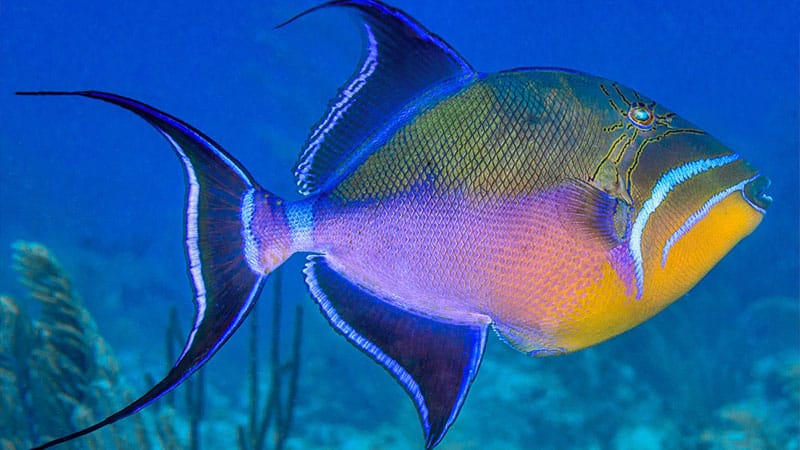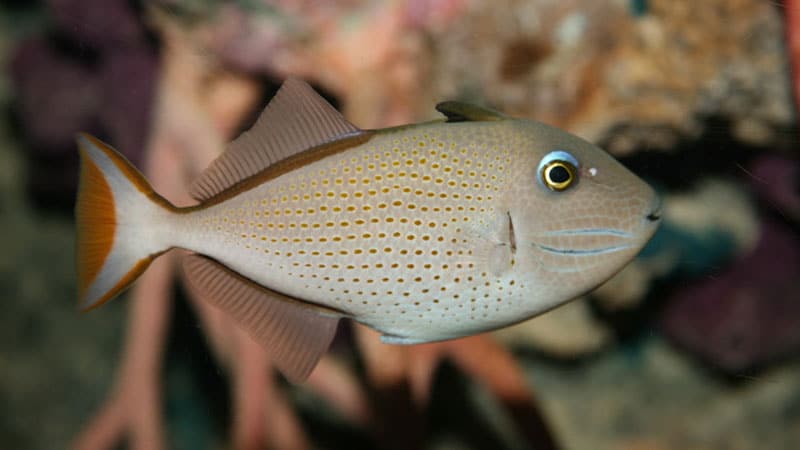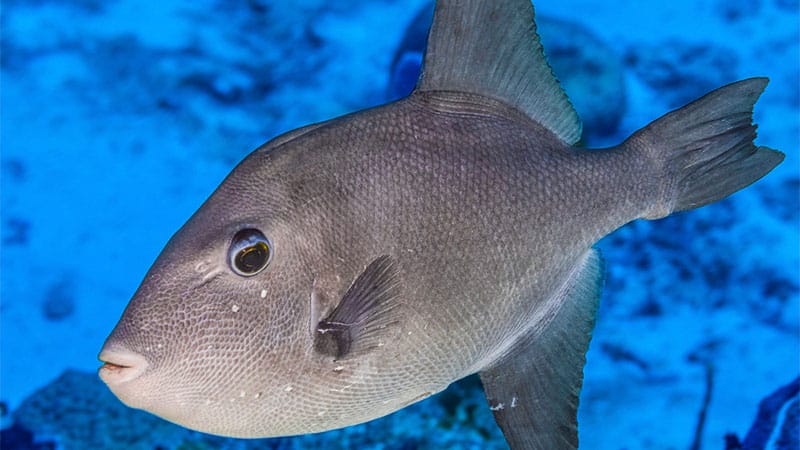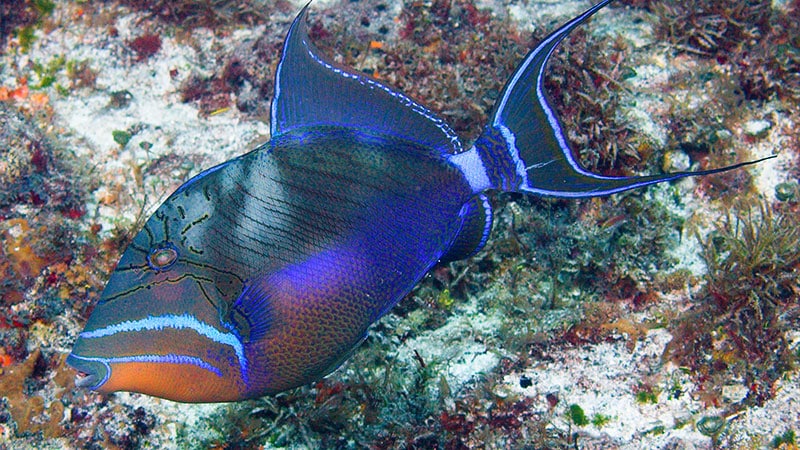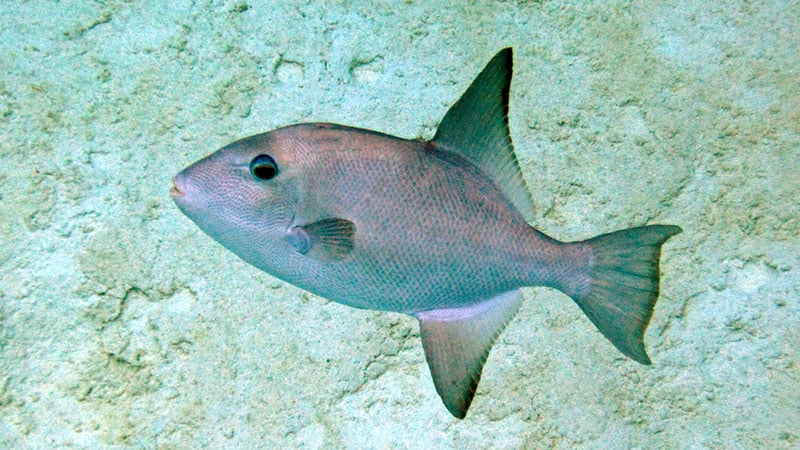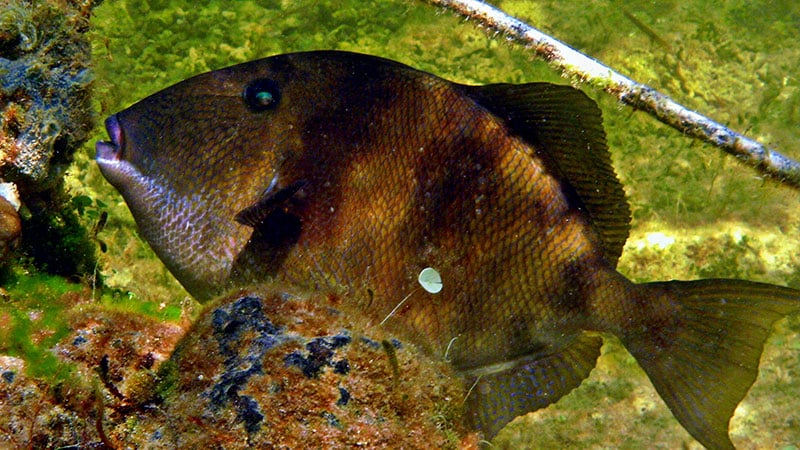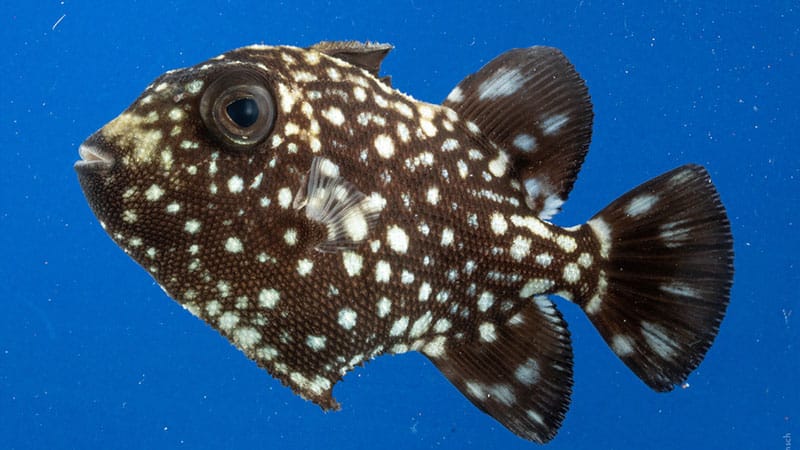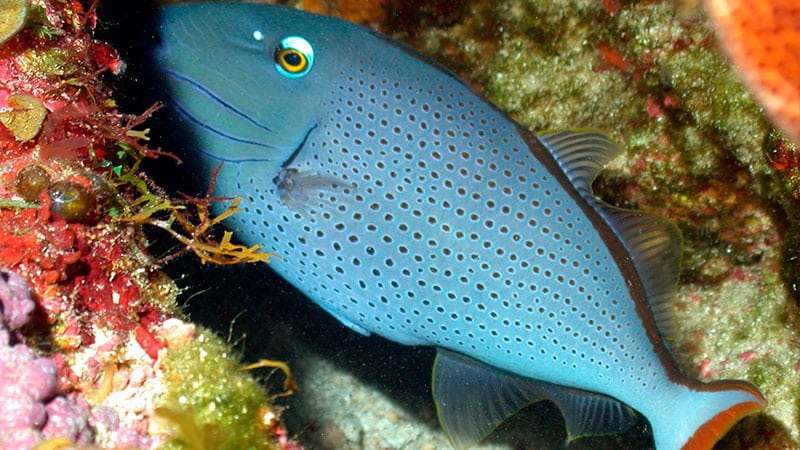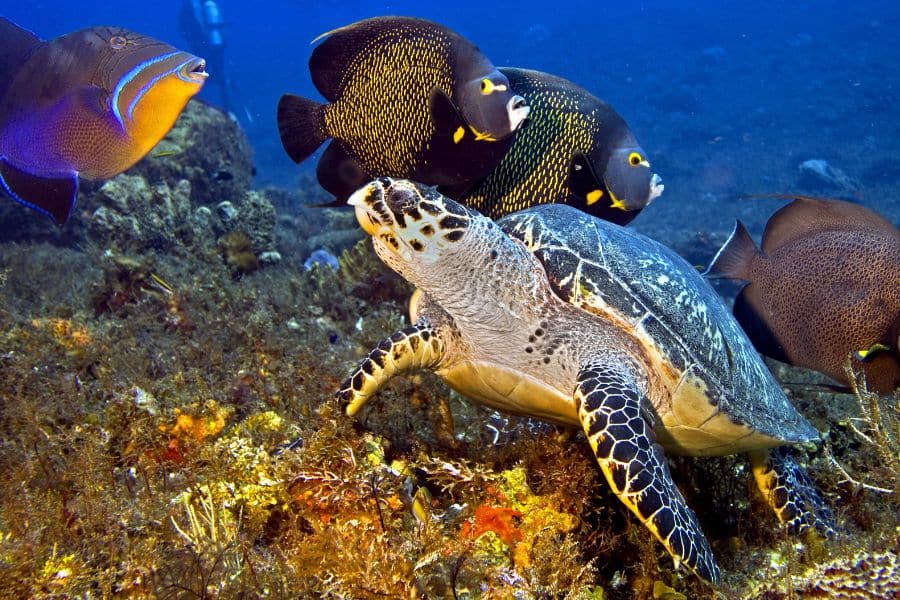When I started this article, I hesitated whether to title it ‘The Teeth of the Triggerfish’ or ‘Triggerfish, the Fearless Fish.’ In the end, I opted for the conservative title because, moreover, it is a topic that interests many people surfing the web. – I’ll tell you why later. –
But I am a diver, and what truly captivates me about this fish is that they fear nothing. Not humans, not their belongings, not even fishermen, let alone divers.
Fishermen share a fascinating story about triggerfish. They say that every time they caught one, other members of their species would emerge from the water to bid farewell. They raise their heads to gaze at the intruder who took one of their own, with those cross-eyed eyes that seem to dance to their own melody.
Fishermen say that these wandering eyes give them extraordinary vision, allowing them to see the world differently, and that’s why they have no fear of humans. We are just one more species among the many that threaten them.
I still remember the first time I saw a queen triggerfish. I was diving in Cozumel and saw the queen triggerfish confronting a much larger grouper that had come too close to its nest. There it was, that brightly colored fish, barely 40 cm in size, pushing with its snout and taking bites at that huge fish, saying, ‘Back off, this is my home!’
However, we are fearless divers too, and we stayed. Of course, we approached with great respect to learn many more interesting facts about the triggerfish.




